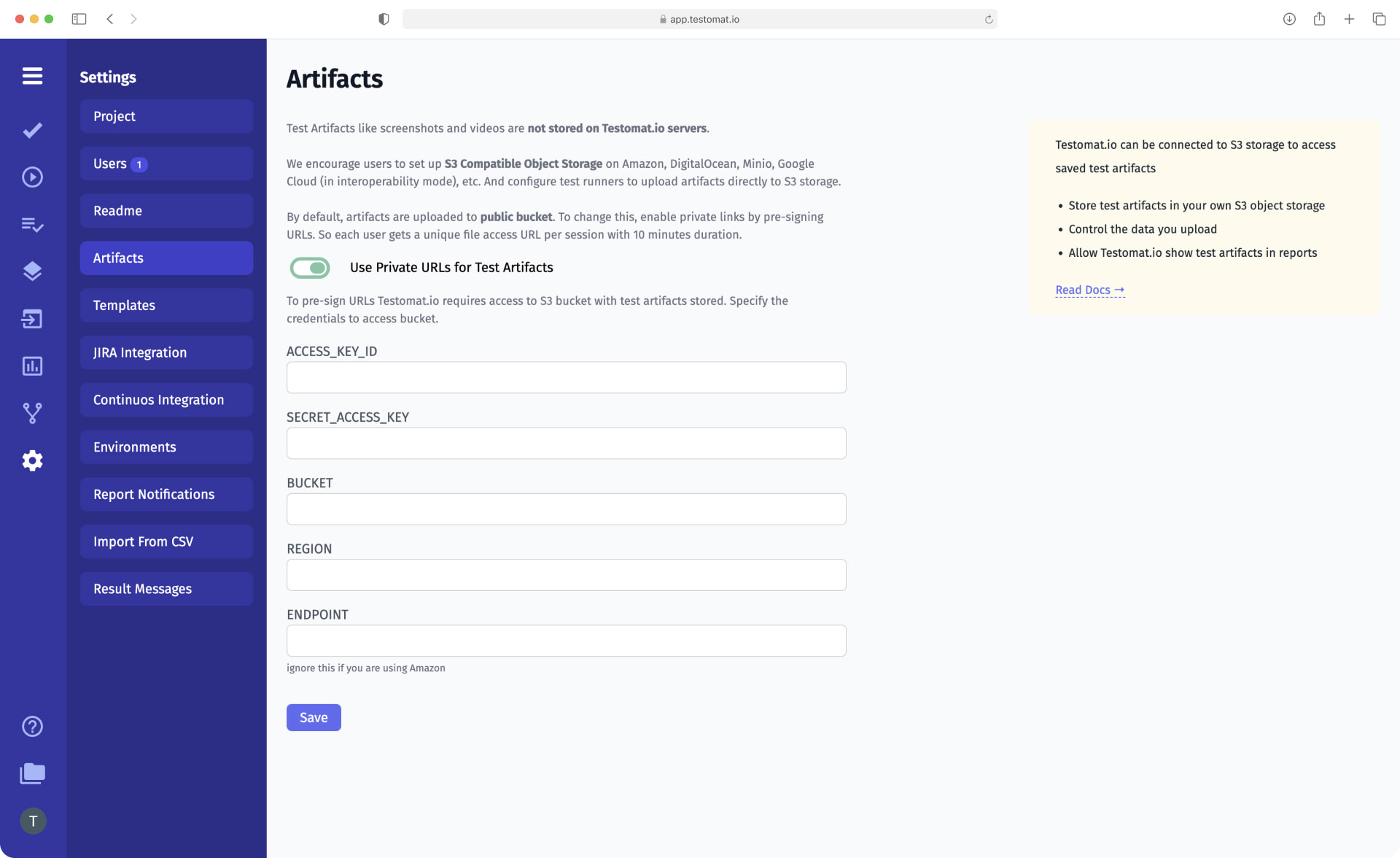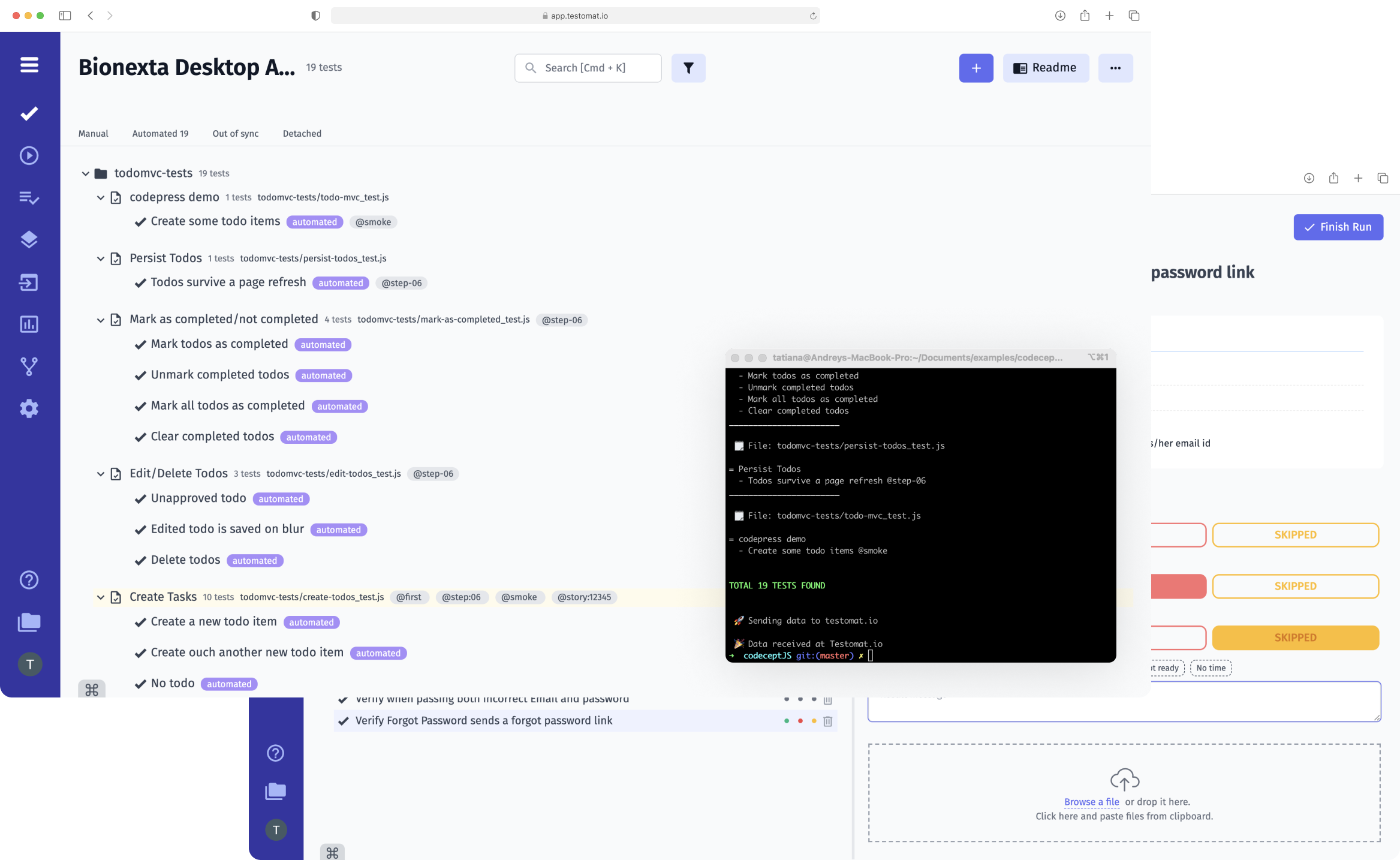
Get the ability to store an unlimited amount of test artifacts in one of the TOP private clouds. Take advantage of testomat.io integration with AWS, DigitalOcean, Azure, and Google Cloud.
What Are the Benefits of Artifacts S3 Support for Your Team
Due to seamless integration, you can store unlimited test artifacts in the cloud and connect to whichever provider you or your company prefers to work with.
Please note: S3 Storages charges for their services. So be sure to check their rates when choosing a provider.
So, Test Runner and Reporter uploads test artifacts to the cloud, from where they end up in test management reports. Why is this convenient for your QA team? Finding videos and screenshots from a particular test would be difficult without this feature. If automated tests were run locally, the artifacts would have to be searched manually in the corresponding project. CI\CD services don’t provide test artifacts in a user-friendly format either. Seamless integration with S3 Storages allows quick access to test artifacts, allows uploading test artifacts to into the test management system from outside cloud storage. And all stakeholders can view videos and screenshots from any completed test in one click.
How to set up Artifacts S3 Support
For users of testomat.io, Artifacts S3 support means easy access to test artifacts:
- Create an S3 Object Storage Bucket in one of the cloud storages: AWS, DigitalOcean, Azure, or Google Cloud.
- When you run autotests, specify your cloud storage configuration in the parameters.
- Receive reports of completed tests with videos and screenshots from the tests attached to them.
To configure receiving artifacts, all you need to do is write your storage data once. You can disable artifact publishing by adding the TESTOMATIO_DISABLE_ARTIFACTS=1 variable. More detail in Docs
Also, both test Artifacts Screenshots and video recording open such possibilities:
- upload artifacts in public and private formats;
- obtain video and screenshots for tests with different statuses (passed, failed, and skipped);
- add artifacts not only to automatic but also to manual tests.
Advantages of using Test Management App
Our team is currently hard working on a well-formed test management environment, so the main part of the app does not work in isolation. Most test management features are interconnected.
The Artifacts S3 support feature is closely related to other testomat.io functionality as well:
- Reporters by Testing Frameworks – after completing a test run, the test management app generates detailed reports on the test results. Thanks to Artifacts S3 support, test artifacts are pulled into these reports if you set appropriate parameters. They allow QAs to visually assess and eliminate errors as quickly as possible.
- Automated Tests Analytics – advanced test management analytics allows you to track defects, test automation coverage, and product compliance. You can identify unreliable, slowest tests or projects with the highest number of failed tests and pay maximum attention to them. Such in-depth analytics are possible thanks to detailed test reports with attached artifacts inside.
- Jira Integration – by installing the Jira plugin, project management and test automation systems are integrated from both sides. You can run automated tests directly from Jira and work with the project from the test management system. For example, in Jira, you can go to test run reports and view videos and screenshots uploaded with Artifacts S3 support.
- CI\CD execution – test automation is a prerequisite for successful CI\CD practice. Our web test management solution supports seamless integration with popular CI\CD tools GitHub, GitLab, Jenkins, Bamboo, and CircleCI. This allows for continuous testing and real-time test reports. Artifacts S3 support allows you to visualize test results and determine more quickly where the problem occurred.
- Test synchronization – when a QA engineer receives a detailed test results report with artifacts attached to it, he needs to be sure that these results are correct. Out-of-sync test cases notify him of all changes made to the tests; they are marked by Out of sync label. After receiving this notification, the tester can quickly decide whether to re-import or cancel the changes. In addition, detached tests are marked automated tests if they exist in the test management system but were absent on the next import.
